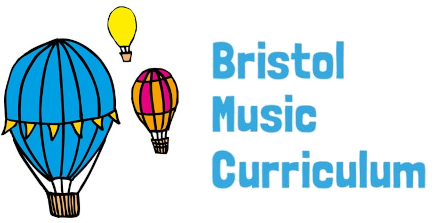Key Learning Objectives: To compose and play rhythms including rests. To understand how rests are notated. To begin to notate rhythms including rests. Starter activity: Select an activity from the Rhythm Starter Bank. Main activity: Recap the symbol for a crotchet (quarter note) rest. Pupils to tip cups to create a 4 beat rhythm and […]
Category: Unit 2
Year 3, Unit 2: Junk Percussion – Lesson 3
Key Learning Objectives: To understand that rhythm is a pattern made of notes of different lengths. To understand that rests are beats of silence. To play and compose rhythms that use rests. Starter activity: Introduce the concept of rests using four cups to represent four beats. The cups are positioned to either represent a sounded […]
Year 3, Unit 2: Junk Percussion – Lesson 2
Key Learning Objectives: To understand that the 1st beat of the bar is the ‘strong’ beat. To further consolidate understanding of duration (pulse) using kinaesthetic learning to internalise Starter activity: Select an activity from the Rhythm Starter Bank. Main activity: Recap the definition of ‘pulse’ from lesson one, playing a different 4/4 track from the […]
Year 3, Unit 2: Junk Percussion – Lesson 1
Key Learning Objectives: To understand that pulse is a regular beat in music. To develop understanding of pulse using kinaesthetic learning. Starter activity: Select an activity from the Rhythm Starter Bank. Main activity: Introduce the concept of the pulse, playing either ‘Mmmbop’ or ‘Oye Como Va’, both pieces of music in 4/4 time. March around the […]
Year 2, Unit 2: Chronology – Lesson 6
Key Learning Objectives: To notate sounds using a graphic score. To compose and perform a piece of music using sampled sound. To compose and perform a motif which suggests a looming effect. Starter activity: Listening and response exercise based on the work ‘Loomings’ by Three Cane Whale. Introduction to the concept of minimal music as […]
Year 2, Unit 2: Chronology – Lesson 5
Key Learning Objective: To explore, recognise and respond to features of a piece of music from the 20th century. Starter activity: Listening and response exercise. Play the clip of ‘Birdsong’, the class will create a ‘bird orchestra’ based on one of the birdsongs from the clip. Main activity: Exploring the piece of music, ‘Oiseaux Exotiques’, written to sound […]
Year 2, Unit 2: Chronology – Lesson 4
Key Learning Objectives: To listen with focus and understanding to a well-known piece of Nationalistic music. To make a personal response through movement or art work to the dramatic mood of the music. To discuss how the inter-related dimensions of music are used to create the dramatic mood. Starter activity: Tell the story ‘The […]
Year 2, Unit 2: Chronology – Lesson 3
Key Learning Objective: Explore and creatively respond to a well-known piece of music from the Romantic Period. Starter activity: Introduction to instrument families via a virtual tour, focusing in particular on the celeste, cello, flute and bassoon. Main activity: Introduction to Romantic Period Composition, play ‘Dance of the Sugarplum Fairy’, revealing this work to be written […]
Year 2, Unit 2: Chronology – Lesson 2
Key Learning Objectives: To listen and respond to music from the Baroque period. To recognise some of the instruments of the period. Starter activity: Singing exercise, learn ‘Frère Jacques’, introducing the concept of a sung round. Main activity: Introduction to Baroque musical instruments (Pipe Organ, Harpsichord, Lute) and forms (Prelude and Fuge.) Plenary: Voyager Spacecraft – Discuss […]
Year 2, Unit 2: Chronology – Lesson 1
Key Learning Objectives: To listen and respond to music from the Renaissance era verbally and through dance. To compare different types of music from the Renaissance era. Starter activity: Instrument recognition exercise carried out in pairs, followed by a discussion based around varying pitch and dynamic levels. Main activity: Listening exercise, delivered in a Listening Space. […]
